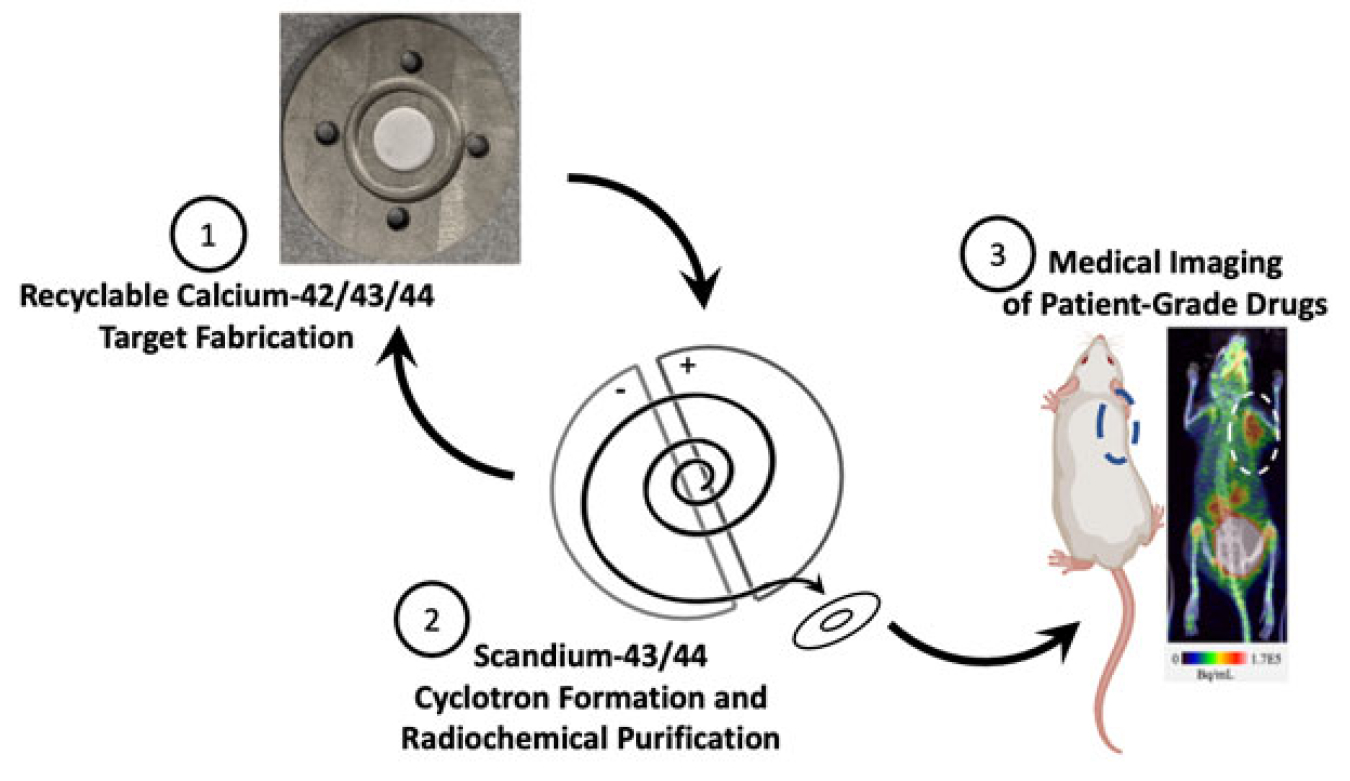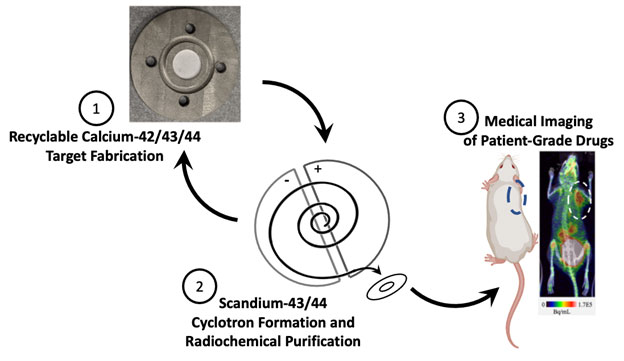
The Science
Scandium radioisotopes are potentially useful for medical imaging such as positron emission tomography (PET) scans. However, health care providers do not currently use these isotopes to image cancer because they are difficult to produce in the amounts and purities appropriate for human use. In particular, they must be made using special isotopically enriched calcium targets. These targets are rare, expensive, and difficult to use in an accelerator. This work describes ways to make and irradiate accelerator targets for scandium. These targets produce enough radioactive scandium to perform more than a dozen diagnostic PET assessments of human patients. The process recycles the calcium target material with more than 95% efficiency.
The Impact
Pairing diagnostic and therapeutic drugs is called “theranostics.” This technique is one of the most promising options for managing diseases like cancer. Scandium-43 and scandium-44 are two of the most promising options for theranostic medicine paired with therapeutic scandium-47. Making these isotopes requires costly titanium and calcium starting materials. They also require difficult irradiation and chemical processing to isolate. These factors have inhibited the development of scandium-based treatments and limited their availability. This work demonstrates sustainable methods that address these limitations. The DOE Isotope Program is supporting this and other research and development efforts on scandium radioisotope production at several facilities. The program’s goal is to make scandium radioisotopes routinely available in the near-term.
Summary
Researchers at the University of Wisconsin, Madison studied five nuclear reactions that form scandium-43 and scandium-44 from proton and deuteron irradiation of calcium oxide accelerator targets. The experiments looked at the quantities and purities of scandium-43 and scandium-44 made when starting with commercially available targets with calcium enriched in the isotopes calcium-42, calcium-43, and calcium-44. The largest yields and highest purities measured were of scandium-44 when calcium-44 was irradiated with protons; this made 120 millicuries in an hour of irradiation with more than 99.7% purity. The researchers also developed processes to chemically purify scandium and to recover the very expensive calcium target materials, which helps make them sustainable in a modern hospital environment.
The scandium-43 and scandium-44 radioisotopes produced from all reactions studied are pure enough to use as radioactive drugs that target cancer. In modern diagnostic medical procedures using PET scanners, the resolution and quantitative performance of these scandium radioisotopes is superior to the existing clinical standard of care radiometal isotope gallium-68.
Contact
Jonathan W. Engle
University of Wisconsin, Cyclotron Research Laboratory
[email protected]
Funding
This research is supported by the Department of Energy Isotope Program, managed by the DOE Office of Science for Isotope R&D and Production.
Publications
Becker, K.V., et al., Cyclotron production of 43Sc and 44gSc from enriched 42CaO, 43CaO, and 44CaO targets. Frontiers in Chemistry, 11, 1167783. [DOI: 10.3389/fchem.2023.1167783]
Scraped from https://www.sourcearu.com




